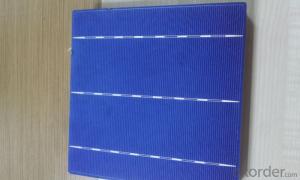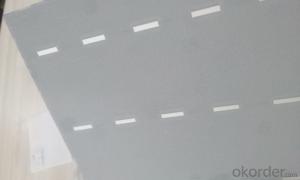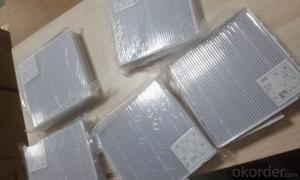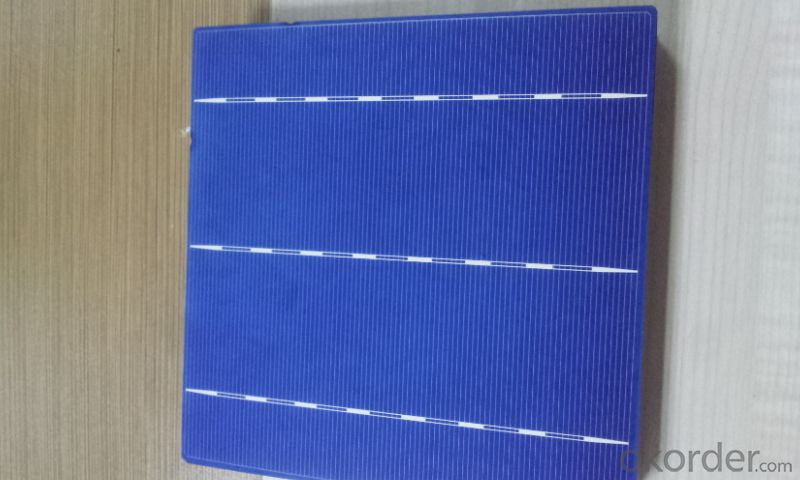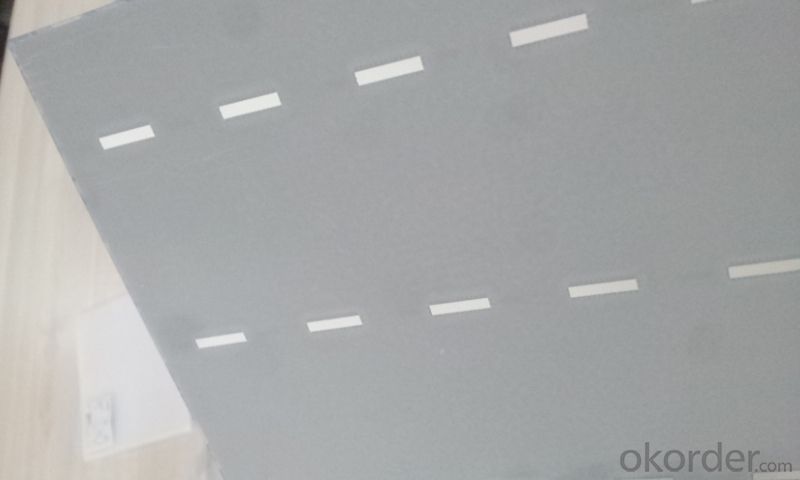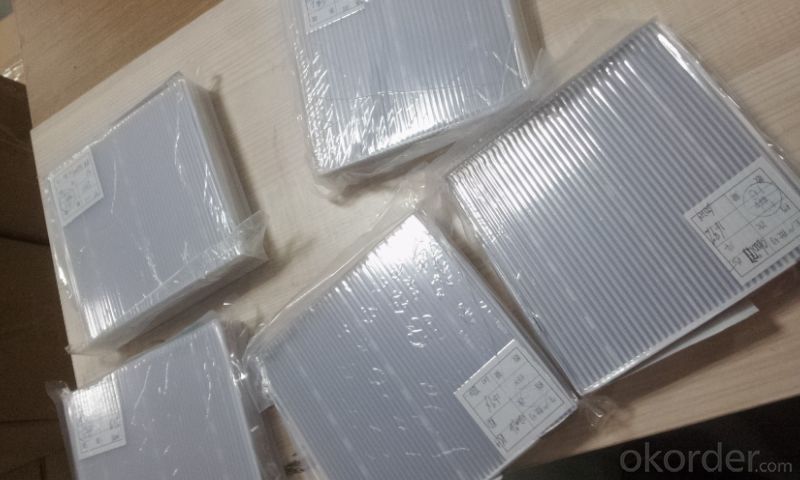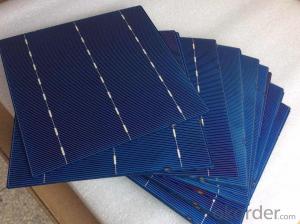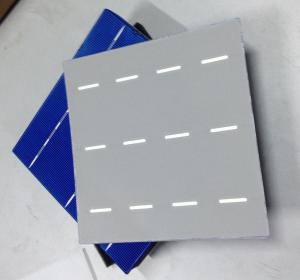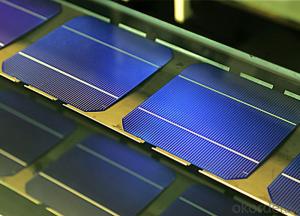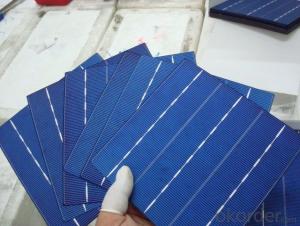Portable Solar Cells Camping - Polycrystalline Solar Cells Tire 1 Manufacturer in China - 17.40%
- Loading Port:
- Shanghai
- Payment Terms:
- TT OR LC
- Min Order Qty:
- 10000 watt
- Supply Capability:
- 500000 watt/month
OKorder Service Pledge
OKorder Financial Service
You Might Also Like
Brief Introduction of Solar Cells
A solar cell, is an electrical device that converts the energy of light directly into electricity by the photovoltaic effect, which is a physical and chemical phenomenon. It is a form of photoelectric cell, defined as a device whose electrical characteristics, such as current, voltage, or resistance, vary when exposed to light. Solar cells are the building blocks of photovoltaic modules, otherwise known as solar panels.
Specifications of Polycrystalline Solar Cells
Format : 156 mm × 156 mm ± 0.5 mm
Thickness: 210 μm ±40 μm
Front (-) : 1.5mm bus bars (silver),blue anti-reflection coating (silicon nitride)
Back (+) : 2.5mm wide soldering pads (silver) back surface field (aluminium)
Efficiency (%) | Pmpp (W) | Umpp (V) | Impp (A) | Voc (V) | Isc (A) |
18.00% | 4.38 | 0.528 | 8.291 | 0.631 | 8.869 |
17.80% | 4.33 | 0.525 | 8.252 | 0.629 | 8.821 |
17.60% | 4.29 | 0.532 | 8.053 | 0.633 | 8.541 |
17.40% | 4.23 | 0.528 | 8.092 | 0.624 | 8.632 |
17.20% | 4.19 | 0.524 | 7.992 | 0.62 | 8.458 |
17.00% | 4.14 | 0.52 | 7.972 | 0.623 | 8.5 |
Advantage of Polycrystalline Solar Cells
1. High efficiency and High power.
2. Long-term electrical stability.
3. Lowest price and Fastest delivery.
4. Good quality and good service.
5.Bulk supply
6. Good Warranty
7.Big Sale
8.Made in Taiwan/Germany etc for high quality
9.More than 35 years on the lifetime.
10 DHL/Fedex/UPS/TNT/EMS etc
11 Taiwan/Germany CO provided
Usage of Polycrystalline Solar Cells
Solar cells are often electrically connected and encapsulated as a module. Photovoltaic modules often have a sheet of glass on the front (sun up) side, allowing light to pass while protecting the semiconductor wafers from abrasion and impact due to wind-driven debris, rain, hail, etc. Solar cells are also usually connected in series in modules, creating an additive voltage. Connecting cells in parallel will yield a higher current; our solar cells have passed IEC Certification. With high and stable quality, our cells can greatly improve the performance of Solar Modules.
Applications of Polycrystalline Solar Cells
Assemblies of photovoltaic cells are used to make solar modules which generate electrical power from sunlight, as distinguished from a "solar module" or "solar panel". A solar array generates solar power using solar energy.
Packaging & Delivery of Polycrystalline Solar Cells
Carton Box Package and Deliver by air. It should be noticed that it should be avoid of water, sunshine and moist.
Factory Picture of Solar Cells
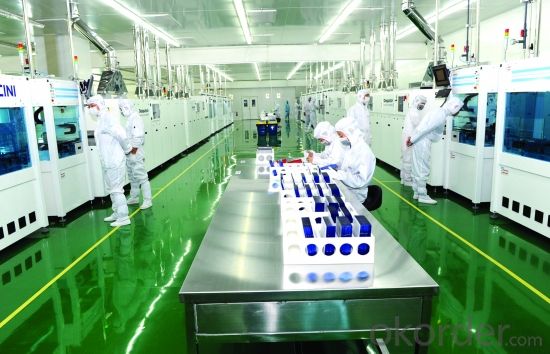
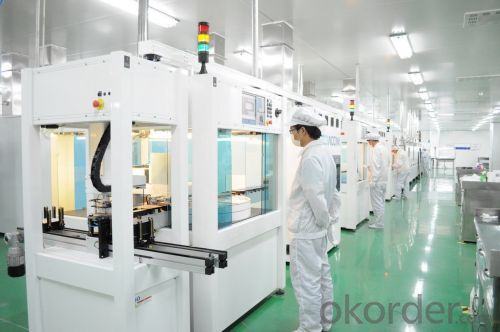
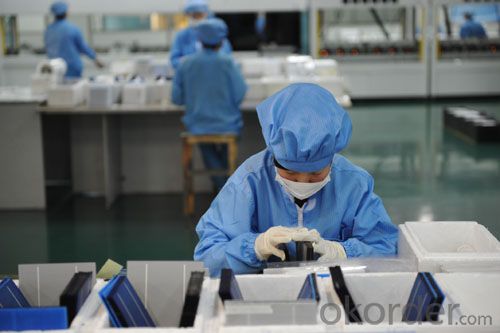
FAQ
We have organized several common questions for our clients,may help you sincerely:
1. What’s price per watt?
A: It’s depends on the quantity, delivery date and payment terms of the order. We can talk further about the detail price issue. Our products is high quality with lower price level.
2. Can you tell me the parameter of your solar cells?
We have different series of cells with different power output, both from c-si to a-si. Please take our specification sheet for your reference.
3. How do you pack your products?
We have rich experience on how to pack the panels to make sure the safety on shipment when it arrives at the destination.
4. Can you do OEM for us?
Yes, we can.
5. How long can we receive the product after purchase?
In the purchase of product within three working days, We will arrange the factory delivery as soon as possible. The perfect time of receiving is related to the state and position of customers. Commonly 7 to 10 working days can be served.
- Q: What is the impact of solar cells on reducing energy waste?
- Solar cells have a significant impact on reducing energy waste by harnessing the sun's energy and converting it into electricity. By utilizing renewable and clean energy sources, solar cells contribute to reducing the dependence on fossil fuels, which are finite and contribute to environmental pollution. Additionally, solar cells help decrease energy waste by generating electricity at the point of use, minimizing transmission and distribution losses.
- Q: Can solar cells be used at night?
- No, solar cells cannot be used at night as they rely on sunlight to generate electricity.
- Q: What is the role of solar cells in powering traffic signals?
- Solar cells play a crucial role in powering traffic signals by harnessing sunlight and converting it into electrical energy. This renewable energy source eliminates the need for traditional grid connection and reduces the environmental impact of traffic signals. Solar cells ensure a sustainable and reliable power supply for traffic signals, even during power outages, while simultaneously reducing energy costs and promoting a greener transportation infrastructure.
- Q: What is the role of power optimizers in solar cell systems?
- The role of power optimizers in solar cell systems is to maximize energy production by individually optimizing the output of each solar panel. They ensure that each panel operates at its maximum efficiency, regardless of shading or mismatch in the system. This results in higher overall energy yields, improved system performance, and enhanced safety by reducing the risk of fire hazards or other issues caused by reduced voltage.
- Q: What is the role of solar cells in powering data centers?
- Solar cells play a crucial role in powering data centers by harnessing the energy from sunlight and converting it into electricity. By installing solar panels on the roofs or surrounding areas of data centers, these cells generate clean and renewable energy to meet a portion of the center's power needs. This reduces reliance on traditional energy sources and helps data centers become more sustainable and environmentally friendly.
- Q: How do solar cells perform in dry desert conditions?
- Solar cells perform very well in dry desert conditions. The abundance of sunlight and low humidity levels in deserts make them ideal environments for solar energy generation. The absence of cloud cover and dust particles allows solar cells to efficiently convert sunlight into electricity, resulting in higher energy production. Additionally, the heat in desert regions can actually benefit solar cells, as higher temperatures can increase their efficiency. Overall, solar cells are highly effective and efficient in dry desert conditions.
- Q: What materials are commonly used to make solar cells?
- Silicon is the most commonly used material for making solar cells. Other materials, such as cadmium telluride, copper indium gallium selenide, and perovskite, are also used in certain types of solar cells.
- Q: Can solar cells be used for powering electronics?
- Yes, solar cells can be used to power electronics. Solar cells convert sunlight into electrical energy, which can be used to directly power electronic devices or charge batteries for later use. This makes solar cells a sustainable and renewable energy source for various electronics, ranging from small devices like calculators and smartphones to larger systems like homes or even entire cities.
- Q: Can solar cells be used for hydrogen production?
- Yes, solar cells can be used for hydrogen production through a process called electrolysis, where the electrical energy generated by the solar cells is used to split water into hydrogen and oxygen. This method, known as solar water splitting, offers a sustainable and renewable way to produce hydrogen without carbon emissions.
- Q: What is the maximum efficiency that a solar cell can achieve?
- The maximum efficiency that a solar cell can achieve is known as the Shockley-Queisser limit, which is approximately 33.7%.
Send your message to us
Portable Solar Cells Camping - Polycrystalline Solar Cells Tire 1 Manufacturer in China - 17.40%
- Loading Port:
- Shanghai
- Payment Terms:
- TT OR LC
- Min Order Qty:
- 10000 watt
- Supply Capability:
- 500000 watt/month
OKorder Service Pledge
OKorder Financial Service
Similar products
Hot products
Hot Searches
Related keywords
